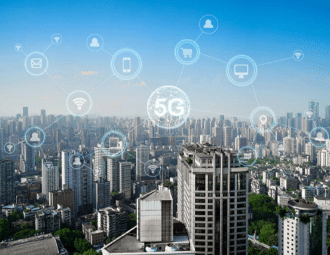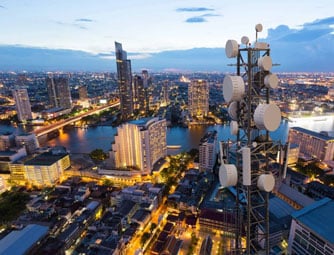Everything You Wanted to Know About Millimeter Waves & The 5G Network
December 9, 2019

An increasing number of people in the world go online these days. As internet-based content consumption proliferates, so too does the need for an uninterrupted and fast streaming service. But the fact is that most telecom companies are woefully ill-equipped to scale the speed of their operations. Even 4G is becoming difficult for some companies in developing countries.
The answer to this problem comes in the form of 5G networks. It is expected that 5G will reduce latency to less than one millisecond and will offer data download speeds reaching 20 Gbps. But how will 5G actually achieve this? This is where millimeter waves come into the picture.
Small waves, big potential
5G networks can only be operated efficiently on extremely high-frequency waves. One such wave that’s expected to support 5G is the millimeter-wave. This wave measures between 1 millimeter & 10 millimeters and transmits within the range of 30 GHz to 300 GHz.
Today, millimeter waves are used to operate satellites and radar systems. However, telecom and wireless technology companies are exploring this field to test its utility for 5G.
For the 5G network to successfully work, telecom companies need higher bandwidth. This is because the higher the bandwidth, the faster the data transmission speed gets. However, with the advancement of 4G LTE, the network becomes too crowded (especially between 800 MHz & 5GHz), with the bandwidth reducing each passing day. This is why there’s a need to explore top-level frequencies. These higher-level frequencies on the spectrum are relatively unused, giving adequate space to anyone who wishes to use them.
It’s been observed that frequencies between 24 GHz and 60 GHz have the highest potential for allowing near-zero latency transmissions. These millimeter waves have also been observed, creating a spectrum bandwidth of 2 GHz, as opposed to the 100 MHz bandwidth of lower-level frequencies.
Recently, many regulators around the world have opened licensing procedures for companies that wish to tap into the millimeter wave market. The hope is that millimeter-waves will make 5G a reality not just for digital devices like smartphones, tablets, and kindles, but also for other network-driven innovations, like autonomous machinery, IoT-connected devices, VR technology, and more.
Problems that telecoms may face due to millimeter waves
While millimeter waves boast massive advantages over other radio frequencies, they do have some disadvantages. For example, millimeter waves aren’t capable of bouncing off physical objects. Everything from tree branches to bundling doors can interfere with and absorb the transmission and put a halt to the signal.
Additionally, millimeter waves are inherently more expensive than other commonly-used frequencies. This makes the technology almost inaccessible for smaller companies that don’t have the finances. The smartphone’s antenna covering might also disrupt the waves and prevent reception.
For now, the focus is on building millimeter-wave-friendly 5G infrastructure. This includes setting up micro base stations in open land with technology that exclusively supports millimeter waves and redesigning the structure of devices that will be run using the 5G network.
Get ready for the 5G revolution
At NextGen Global Resources, we have extensive experience in staffing within the telecom space. We can help your company find the right candidate who can contribute to your journey towards 5G. Speak to us for more information about our services.





























